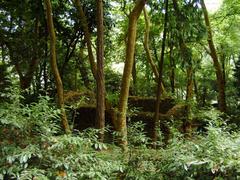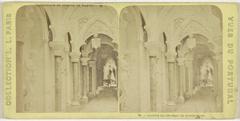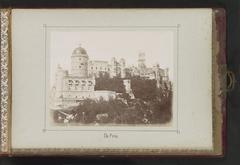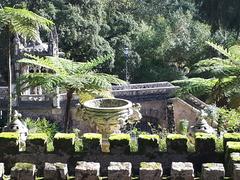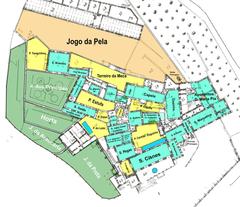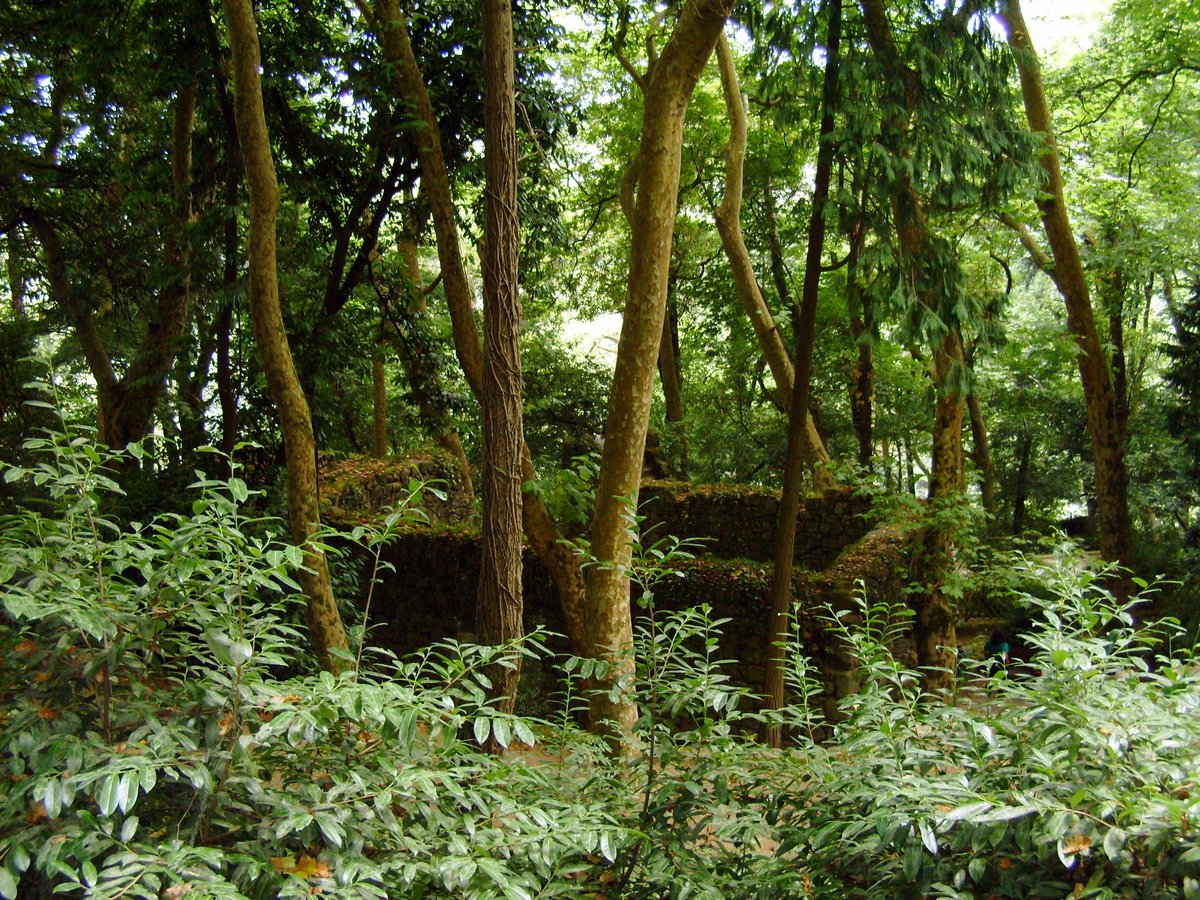
Igreja Paroquial de São Pedro de Penaferrim: Visiting Hours, Tickets, and Historical Significance in Sintra, Portugal
Date: 14/06/2025
Introduction
Nestled in the historic parish of São Pedro de Penaferrim in Sintra, Portugal, the Igreja Paroquial de São Pedro de Penaferrim is a remarkable testament to centuries of Portuguese religious, cultural, and architectural development. With origins tracing back to the 12th and 13th centuries, the church reflects the Christian foundations of the region and its evolution through the medieval, Renaissance, and Baroque periods. Today, it stands as both a living place of worship and a cultural treasure, notable for its architectural features, artistic heritage, and central role in the Sintra community.
Its strategic location at the eastern foothills of the Sintra mountains places it within easy reach of other iconic sites such as the Palácio Nacional de Sintra, Castelo dos Mouros, and the Pena Palace. Whether you are a history enthusiast, a lover of architecture, or seeking a contemplative stop on your Sintra itinerary, this church offers a meaningful and enriching experience.
For up-to-date planning and resources, visit the Official Sintra Tourism Website or consult Património Cultural.
Quick Visitor Information
- Opening Hours: Typically open Monday to Saturday, 9:00 AM – 6:00 PM; Sunday, 8:00 AM – 12:00 PM and 5:00 PM – 7:00 PM. Closed on public holidays.
- Admission: Free; donations are appreciated to support conservation.
- Guided Tours: Available upon request via the parish office or local tourist providers.
- Accessibility: Step-free main entrance, but interior access may be limited for wheelchairs due to historical architecture.
- Photography: Permitted without flash, except during services.
Getting There
The church is centrally located in São Pedro de Penaferrim, Sintra:
- By Car: Public parking is available nearby.
- By Public Transport: Accessible via Scotturb bus lines 434 and 435 from Sintra’s town center.
- On Foot: Approximately a 15-minute walk from Sintra train station, passing cafés and shops.
For maps and navigation, see Guia Empresas.
Historical Overview
Medieval Foundations and Early Development
The church’s roots go back to the 12th or 13th century, established as Sintra grew beyond its castle walls following the Christian reconquest. Dedicated to Saint Peter, the church became a spiritual anchor for the parish, serving as a center for both worship and community life (Visit Portugal).
Architectural Evolution
Originally a simple medieval structure, the church was expanded and renovated over the centuries. The most significant transformation occurred after the 1755 Lisbon earthquake, when Pombaline reforms endowed the church with its elegant late-Baroque façade. Contributions from prominent patrons, such as D. Tomás de Almeida, supported the addition of decorative vaults, azulejo tilework, and a marble portal (Paisagem Cultural de Sintra).
Community and Cultural Role
Beyond its religious functions, the church was historically a hub for social welfare, hosting a hospital and leper house in its vicinity. Its enduring presence and artistic heritage reflect the church’s central role in Sintra’s religious and civic history.
Architectural Highlights
Exterior and Façade
- Façade: Distinctive whitewashed walls, a Baroque pediment, and a marble portal with striated columns (16th-century).
- Heraldry: The coat-of-arms of D. Tomás de Almeida crowns the façade (All About Portugal).
- Setting: Located on Largo do Adro da Igreja, surrounded by historic village architecture (Serra de Sintra).
Interior Features
- Nave and Ceiling: Single nave with a coffered dome ceiling, added in the 16th century.
- Azulejo Tiles: 18th-century blue-and-white panels by Valentim de Almeida, depicting Saint Peter’s life and Christian symbols.
- Main Chapel: Baroque gilded wood altarpiece housing a statue of Saint Peter; upper chapel painted in trompe-l’oeil by António Pimenta Rolim.
- Sculpture: A 15th-century Gothic statue of Saint Peter in Ançã stone, connecting the church to its medieval roots.
Atmospheric Qualities
Natural light from small windows highlights the textures of the ceiling, gilded altarpiece, and tilework, creating a reverent and contemplative space.
Religious and Cultural Significance
The church remains the spiritual heart of the São Pedro parish, hosting regular liturgies and sacraments. Each June 29th, the feast of Saint Peter includes masses, processions, and community celebrations. The parish council also organizes charitable events and cultural activities, reinforcing the church’s role as a living institution (Património Cultural).
Efforts to preserve the church involve collaboration among parishioners, local authorities, and national heritage organizations, ensuring the site’s artistic and architectural treasures endure for future generations.
Visitor Experience
What to See
- Baroque façade and marble portal
- Azulejo tilework and gilded main altar
- Gothic stone statue of Saint Peter
- Chapel paintings and heraldic symbols
Local Tips
- Visit early to enjoy a peaceful atmosphere.
- Dress modestly and maintain respectful silence during services.
- Combine your visit with other Sintra landmarks, such as the Moorish Castle, Sintra National Palace, and Quinta da Regaleira.
- Participate in parish events if visiting during local festivals.
Facilities
Restroom access is limited; some interior areas may have steps or uneven floors. Contact the parish in advance for specific accessibility needs.
Frequently Asked Questions (FAQ)
Q: What are the church’s opening hours?
A: Generally Monday to Saturday, 9:00 AM – 6:00 PM; Sunday, 8:00 AM – 12:00 PM and 5:00 PM – 7:00 PM. Confirm locally for updates.
Q: Is there an entrance fee?
A: No, admission is free; donations are welcome.
Q: Are guided tours available?
A: Yes, arrange via the parish office or local tourism providers.
Q: Is the church accessible for visitors with limited mobility?
A: The main entrance is step-free, but some interior areas may be less accessible.
Q: Can I attend Mass as a visitor?
A: Yes, visitors are welcome to participate in regular Masses and feast day celebrations.
Q: Is photography allowed?
A: Yes, except during services; please ask for permission if unsure.
Nearby Attractions
- Palácio Nacional de Sintra: Royal palace with unique chimneys and historical exhibits.
- Castelo dos Mouros: Ancient Moorish castle with panoramic views.
- Pena Palace: Iconic Romanticist palace and gardens.
- Quinta da Regaleira: Mystical estate with gardens, tunnels, and wells.
- Sintra Historic Center: Cafés, shops, and local cuisine.
For more, see Guia da Cidade.
Enhance Your Visit
- Use interactive maps or virtual tours via Sintra tourism websites.
- Leverage travel apps like Audiala for real-time updates, event listings, and guided tour bookings.
Visitor Feedback
Travelers consistently praise the church’s serene environment, historical charm, and welcoming parish community (Guia Empresas).
Further Resources
Conclusion
The Igreja Paroquial de São Pedro de Penaferrim offers a profound glimpse into Sintra’s religious, architectural, and community history. Its blend of medieval roots, Baroque artistry, and vibrant parish life make it a rewarding stop for any visitor. Coupled with free admission, accessibility, and proximity to Sintra’s other historic sites, the church stands out as a must-see destination for culture, history, and spirituality.
Plan your visit today and deepen your appreciation for Sintra’s enduring legacy.
